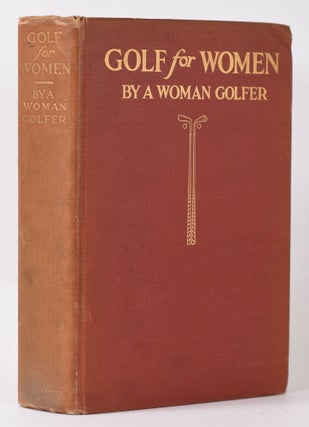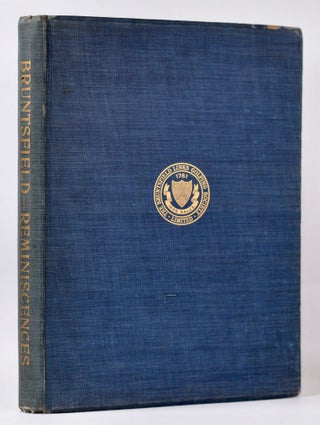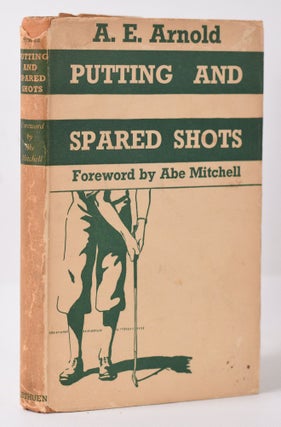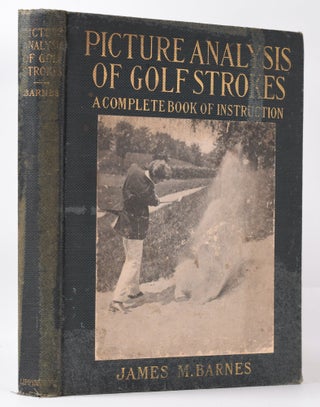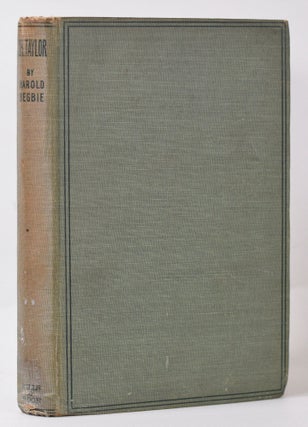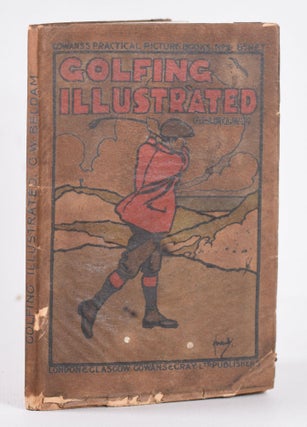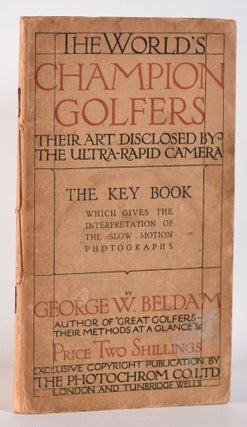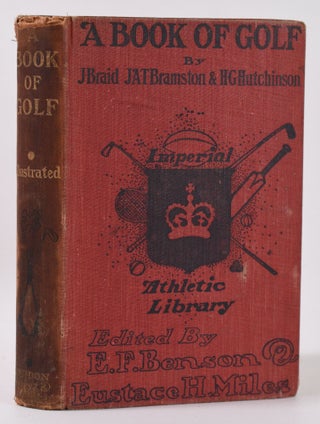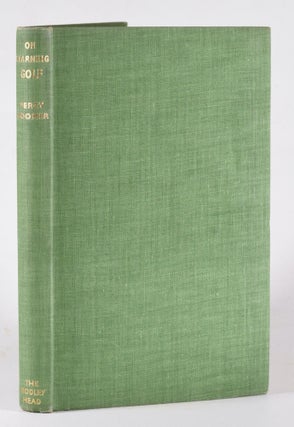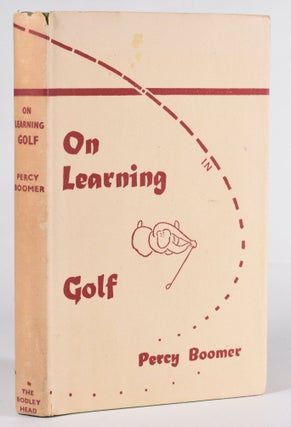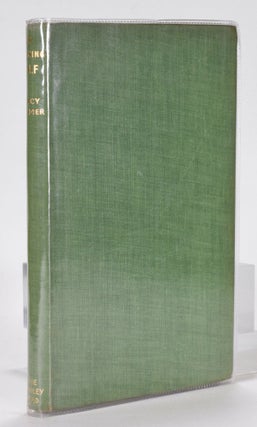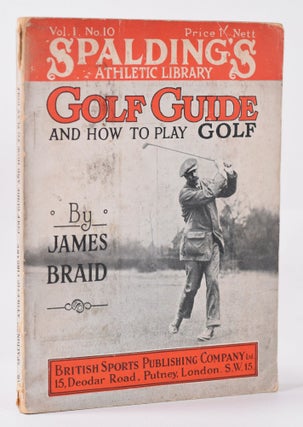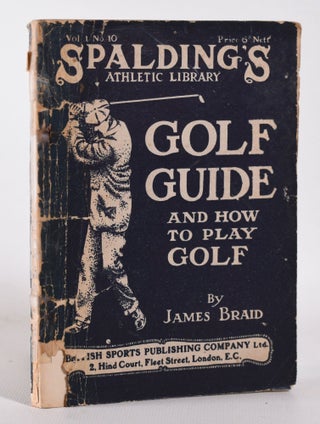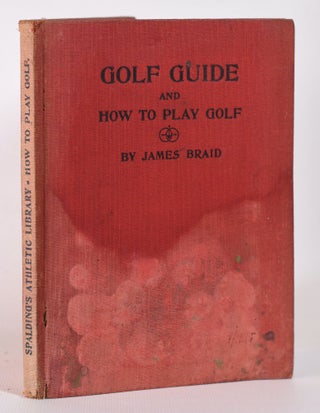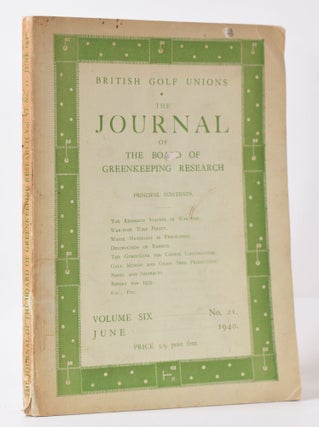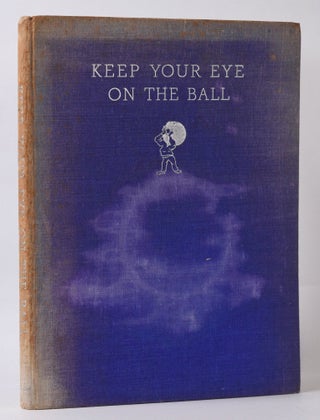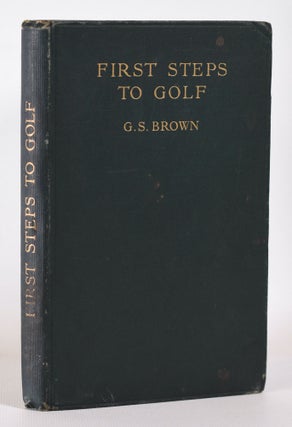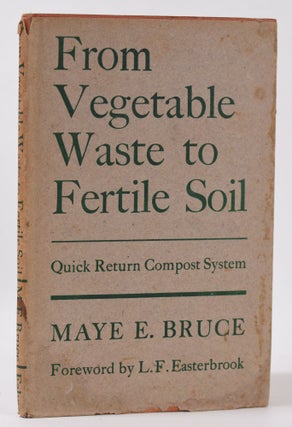Percy Boomer (Instructor, Author, Architect, Agronomist, Player, Visionary...)
1887 - 1949
Click to view autograph gallery
Percy Hugh Boomer 1887-1949
Percy’s library of Golf.
Quite possibily one of the most important golf book collection to become available in many years, untouched in 73 years since Percy's passing in 1949.
Percy’s golf Library is not a complete bibliography of all golf books published, but it does represent a very broad range of early publications, the library has been kept since Percy passed away in 1949 safely and complete within the family, until recently, when the decision was made to let other golfing historians and enthusiasts take care and enjoy the books, in the hope that Percy’s passion and legacy is carried forward into future golfing generations.
No doubt the library was built as a working library, but by studying not only the individual books but the categories collected, it is quickly very obvious that Percy was a wise man and had an incredible passion for golf and a thirst to further his own education.
Building a golf library over 100 years ago, would be quite a challenge, compared to the ease of todays resources.
Anyone interested in golf books needs to find out what books there indeed are, then of course to go out and find them.
Abundantly annoted, Percy used the bibliographies of Harry B. Woods classic Golfing Curios and 'the Like.' (just for good measure a Large Paper copy!), Harold H. Hilton's and Garden G. Smith’s The Royal and Ancient Game of Golf and Cecil Hopkinsons Collecting Golf Books 1743-1938 , included in the library.
Percy's grandchildren remember being told by their father how much time Percy invested in contacting bookseller's, having standing orders for all new publications, (noticeable with many titles being 1st editions) and search/wants lists for older and rearer titles.
Virtually every early instruction book, architecture, ladies titles are included, plus an abundance of early reference, annuals, periodicals, humour, fiction and agronomy books.
Many instructional titles contain hand written notes and underlining, slowly building Percy’s knowledge and understanding his principles to a golf swing, which would culminate in his timeless Classic “On Learning Golf” published in 1942.
Early reference’s, periodicals and annuals show his passion for golf history, rare classic titles, George Robb’s 1863 Historical Gossip, Farnie’s Golfers Manual (1862 2nd edition), Marsh’s Blackheath Golfing Lays (2 copies), a complete run golf and golf Illustrated 1891-1906, every edition (Large Paper 1876, 1st 1875, 2nd 1893 and 3rd 1899) of Robert Clarks Golf: A Royal and Ancient Game. The Reverend John Kerrs Golf Book of East Lothian large and small paper editions!
Architecture titles by MacKenzie, Colt and Alison, Wethered and Simpson’s (large paper edition!), George Thomas, Robert Hunter…
His choice of humour reflects on light hearted character, Irwin’s Golf Sketches, Aikeman’s Pen and Pencil Sketches, Hillinthorn’s Your first Game of Golf along with the collectors mentality to track such rare books down.
Multiple copies are frequently present, confirming again his collector mentality of not wanting to leave a good book behind!
Obviously Percys pupils knew of his passion, many books being gifted and inscribed to him, including gifts from Prince Edward!
.
Percy Boomer Biography
Being the son of a golf mad school teacher father, certainly helped Percy and his brothers into a career that 100 years on is in need of some revisiting.
Percy’s younger (by some 14 years) brother Aubrey is probably of more fame having come second to Bobby Jones in the 1927 Open at St Andrews, played in the first two Ryder cups and likely more including Captaincy, if not for restrictions on non British based players.
Percy and Aubrey learned their golf on the La Moye course that father George Boomer was instrumental in laying out in 1903.
Percy after starting out in his fathers teaching footsteps took a change of heart around his 22nd year, and with a 3 handicap in 1906 took the plunge into a career in golf, no doubt encouraged by father, who had already controversially encouraged other pupils to follow their heart and do what they are good at, against doing what the establishments says you should. This kind of freedom in the very stiff Victorian 1880’s was unheard off, but success father George Boomer did have, Ted Ray, the Vardon brothers, Gaudin, Lafolley, Renouf and Chevalier families, all made careers in part thanks to their school headmaster! Quite literally with golf booming in the 1880/90’s it needed a Boomer!!
Starting in 1906 as eighth assistant to the popular municipal course at Queen’s Park, Bournemouth. He soon moved on to Barton-on Sea, after which bilingualism in French and English was useful in his becoming appointed Professional to the St Cloud Club, Paris in 1913 this position he would hold for over 25 years until the outbreak of the second War brought him safer ground at Sunningdale, Berkshire.
Though he only had a slight physique, Percy thought deeply about the first principles of the game and always claimed to have a manufactured swing (compared with the natural freedom of Aubrey). Nevertheless he was good enough to win three national championships: The Belgian in 1923, Swiss in 1924 and Dutch in 1927. He had a good reputation as a teacher and was credited particularly, with coaching a number of very fine lady golfers between the two world wars. The distillation of his wisdom on the game was contained in the book by which he is perhaps best-known to collectors of golf instruction books: On Learning Golf, first published by The Bodley Head as a limited edition of 500 in 1942, and subsequently reprinted many times.
Percy showed the same capacity for original thought when it came to course maintenance. This is revealed in a series of letters he wrote to the committee of La Moye Golf Club after WWII, when the course was being reclaimed after wartime occupation. By this time, Percy was attached to Sunningdale GC, and conducting his own experiments on the best grass cultivars, fertilisers and water regimes. Anticipating the ideas of Jim Arthur in the 1970s, he advised attention on encouraging root growth rather than foliage, through good aeration and minimal fertilisation. The Club was advised to avoid ‘artificial’ fertilisers and weed control chemicals.


